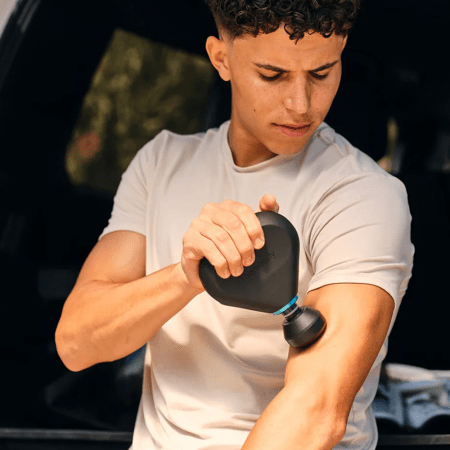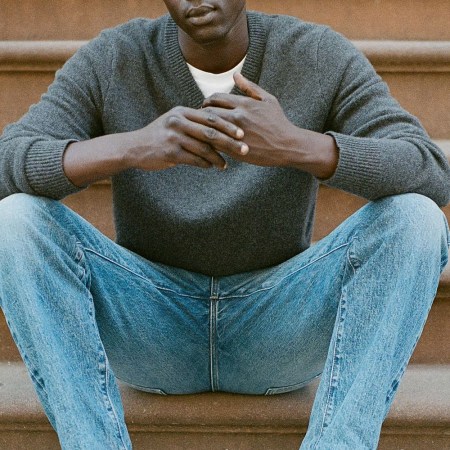Nota bene: All products in this article are independently selected and vetted by InsideHook editors. If you buy something, we may earn an affiliate commission.
Sports science journalist and runner Alex Hutchinson decided, way back in 2014, that running a sub-two hour marathon was possible. He just didn’t think it would happen until 2075. After all, the marathon record had barely fallen over the several decades leading up to the 2010s. But then came 2016, and Nike’s “Breaking2” project — and the release of the now infamous Vaporfly 4%.
Nike researchers found a Formula One track in Northern Italy, commissioned a bunch of pacemakers, and outfitted three runners in an unusual sneaker prototype. One of the runners, a reigning Olympic champion from Kenya named Eliud Kipchoge, promptly ran the fastest marathon ever recorded — though he didn’t break two hours. Three years later, and just a few weeks ago in Vienna, he finished the job, completing 26.2 miles in 1:59:40, while wearing the latest generation of the Vaporfly.
As Hutchinson notes on a podcast with Arielle Duhaime-Ross, a reporter for Vox, the sneakers that Kipchoge first wore that afternoon in Italy have completely changed the sport of running. He says: “The five fastest men’s marathons in history have all been run in the last 13 months, all by runners wearing Vaporflys, several of them by people who I’ve never even heard of and whose names I can’t remember, which is, you know, I’m a serious track geek. So it’s not just all-time greats who are running fast. The top runners are running faster than anyone ever has before. The women’s world record was the one record that hadn’t fallen in the Vaporfly era. And now it has.”
That women’s record now belongs to Brigid Kosgei, who ran the Chicago Marathon in 2:14:4 … also last month, and also while wearing Vaporflys. It begs an obvious question: What the hell is in these shoes?
Well, they don’t look much like your old man’s Asics. Nike originally dropped the Vaporfly under the name Vaporfly 4%, and the number represents the edge in efficiency a runner can expect while racing in them. That edge can be traced to the 36-millimeter midsole, a full five millimeters more than the average midsole height on running sneakers. And that extra space packs a host of innovative (and now controversial) racing technology. There’s Pebax in there, for starters. It’s a lightweight foam that running journalist Amby Burfoot compares to having extra leg muscles — and even better, “muscles” that never get tired. The Vaporfly’s Pebax sole returns 30% more energy than foams used in racing shoes decades ago.
The other inclusion in the midsole is a carbon plate, which … people don’t really know what to make of. It might play a role in energy transfer, it might stabilize form, but whatever it’s doing, it’s working. It’s at the very center of the controversy over the Vaporflys. It’s perfectly understandable that professional runners without carbon-plated shoes would be pissed after narrowly losing races to those who do. Nike has delightedly confirmed the science behind its shoes, too, releasing four different studies over the years that confirm the Vaporfly’s superiority in performance.
Importantly, that advantage extends to non-professional runners, too. According to Strava, marathon runners with Vaporflys are running faster than those without. And if you’re planning on running one anytime soon, you can pick up a pair. The latest version is called the ZoomX Vaporfly NEXT%. The IAAF’s regulations would need to get way more specific for any sort of ban on the Vaporflys; as of now, racing sneakers must be “readily available” to all and not offer runners an “unfair advantage.”
Unsurprisingly, everyone’s got an opinion on the size of that advantage, and what should be done about it. Some in the running community want a cap on “midsole size.” Others are concerned, as brands craft their own carbon-plated sneakers, that this will lead to a “sneakers arm race,” and usher in a silly era of outsized technology in road racing.
For now, though, the sneaker is very much still allowed. If you have the means and are intent on achieving a new personal best on running a race some time soon, we see no reason you shouldn’t pick up a pair. You’re not contractually obliged to wear anything else, after all. At the least, you’ll get to participate in a bizarre era of juiced PRs, in a pair of ludicrously lightweight and ludicrously cushioned running sneakers. It’s unlikely these actually get banned (Nike is just too powerful), so think of it as akin to buying the best driver at a pro shop. Assuming you’ve done the work, you’re going to see improved results. Though note well: you don’t want to really run in these until race day. Try them out once or twice to get a feel for them, but otherwise train in a pair of Epic React Flyknit 2’s.
Head here, meanwhile, to pick up a pair of ZoomX Vaporfly NEXT%s.
We've put in the work researching, reviewing and rounding up all the shirts, jackets, shoes and accessories you'll need this season, whether it's for yourself or for gifting purposes. Sign up here for weekly style inspo direct to your inbox.

















